Redhat Linux 9 Personal
 Price: £36.03 (pre-order price)
Price: £36.03 (pre-order price)
Manufacturer: Redhat Inc.
Website: http://europe.redhat.com/
Required Spec: Pentium-class CPU, 1.7 GB Hard Disk Space, 128MB RAM.
 Redhat is probably one of the oldest and better-known Linux distributions and has been around for some nine years.
The installation was mostly easy-going. I do feel however that for many of the decisions you have to make during install, what is actually being asked would be unclear to a new user. While the default answers provided are all OK, I personally feel much happier if I know exactly how my system is being set up and what the installer is doing. More simplification is needed and I think simply presenting one single page showing all the default options for the install, with the ability to change anything which needs to be.This method has already been adopted by SuSE and I think it works really well and makes installation a breeze. The installation manual provided does partly help to make things clearer, but I think that it often goes into too much depth for a new user. Extensive documentation is also provided on the included documentation CD.
Redhat is probably one of the oldest and better-known Linux distributions and has been around for some nine years.
The installation was mostly easy-going. I do feel however that for many of the decisions you have to make during install, what is actually being asked would be unclear to a new user. While the default answers provided are all OK, I personally feel much happier if I know exactly how my system is being set up and what the installer is doing. More simplification is needed and I think simply presenting one single page showing all the default options for the install, with the ability to change anything which needs to be.This method has already been adopted by SuSE and I think it works really well and makes installation a breeze. The installation manual provided does partly help to make things clearer, but I think that it often goes into too much depth for a new user. Extensive documentation is also provided on the included documentation CD.
Something which quite annoys me about the installer is having to tell it several times that I want UK English and not US English. Surely if I select the install language as UK English I'm likely to have a UK keyboard and be in the UK time zone?
Post-install configuration is mostly easy, with most hardware having been detected. Scanners and Printers have to be set up separately, but this is easy following the shortcuts on the desktop. Internet configuration is done through the Internet configuration wizard which supports standard dialup, ISDN, ADSL and wireless networks. Now your connection is set up, you then need to dial – instead of an easy dial shortcut on your desktop or program menu, you've got to go back into the network configuration to activate the device. I really think this needs addressing as having to go into the network configuration just to dial or hangup quickly gets tedious.
All the necessary software is installed by default including an office package (OpenOffice.org), E-mail Client/Personal Information Manager (Evolution) and web browser (Mozilla). All these are easily accessible via the shortcut bar on the desktop. Redhat's "Bluecurve" desktop itself is very nice, not only is it nice to look at, but everything you need is organised so it is easy to find.
One essential piece of software which is not installed by default is Windows Networking support. A lot of people who are experimenting with Linux will place it on a network alongside Windows machines and will expect them to be able to easily communicate, particularly to browse the network (no network browser is installed by default) and use Windows printers.
I also noticed that MP3 support has been removed from the system due to potential licensing issues with the MP3 codec. This is easy to fix – but only if you know how. This is something which will cause potential users to opt for a different distribution and I hope that Redhat will release a future update via the online update system to re-enable MP3 support.
I think that while Redhat have made some effort to appeal to new Linux users, they are also ensuring that experienced users have the control they need, but this is at the expense of ease-of-use. There are also various things missing from the Personal Desktop class of installation which would improve the experience for new users.
Quality: 7 out of 10
Value: 7 out of 10
Overall: 7 out of 10
SuSE Linux 8.2 Personal
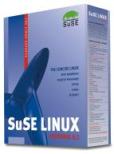 Price: £34.99
Price: £34.99
Manufacturer: SuSE Linux Ltd.
Website: http://www.suse.co.uk/
Required Spec: Pentium-Class Processor, 1 GB Hard Disk Space, 128MB RAM.
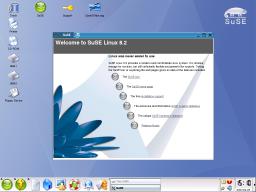 SuSE was one of the first Linux distributions and the company is nearly as old as Linux itself. It has survived tough times when many other distributions have disappeared. Let's hope SuSE can live up to the reputation they've earned.
SuSE was one of the first Linux distributions and the company is nearly as old as Linux itself. It has survived tough times when many other distributions have disappeared. Let's hope SuSE can live up to the reputation they've earned.
The installation is incredibly simple. There are three main stages of installation, the disk preparation and software installation stage, the network configuration stage and the other hardware configuration stage. At each stage, there is a single summary screen with all the default options already selected. You can simply accept the defaults or change whichever options you need to. A very easy installation! The only drawback to the install is that it takes about an hour and and half for the default package options – SuSE comes with a huge amount of software and a fair bit of it is installed by default. A lot of the software installed is irrelevant for most people – how many users need the ability to play Atari ST music files for example?
The installation is clearly targeted at new users and with the on-screen help and user manual, installation really is a breeze. The installer detects all common hardware including network cards, xDSL adapters, ISDN adapters, modems, graphics cards, printers, sound cards and TV cards all without even telling you, except to confirm what it has detected and allow you to change options. A few very unexpected options include the ability to configure multi-headed graphics and use an infrared printer – I haven't seen any of these options in any other distribution.
Many common software packages have shortcuts on the desktop and shortcut bar, and those which aren't there are easy to find in the well organised menu. Configuration of additional hardware is also simple, with excellent support for printers, digital cameras, scanners, wireless networking etc. all via the KDE and YaST2 configuration utilities. I even found a tool to use your computer as an answering machine! However, some of the hardware configuration utilities aren't very user friendly and sometimes require extended Linux knowledge.
SuSE is a very up-to-date system with the best hardware support available as standard. It can however by quite a bulky install and this simply takes too long. A little more work needs doing to the configuration tools to make them more user-friendly and translate them from geek into English, although the tools for common hardware are mostly OK.
Quality: 7 out of 10
Value: 7 out of 10
Overall: 8 out of 10
Mandrake Linux 9.1 Standard
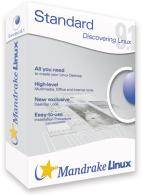 Price: £26.70 (pre-order price)
Price: £26.70 (pre-order price)
Manufacturer: MandrakeSoft
Website: http://www.mandrakelinux.com/
Required Spec: 586-class processor or above, 1GB Hard Disk Space, 64MB RAM.
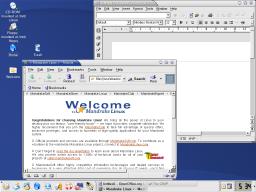 The French distribution Mandrake have always led the way for Linux to make it onto the desktop, often being usability-wise a version ahead of the other members of "The Big Three" - Redhat and SuSE.
The install was well designed and thought out, with on-screen help at every step. There is the odd screen where the question the user is being asked seems to be written in Geek, with no on-screen help provided. I'm surprised that Mandrake allowed such screens to exist in an otherwise user-friendly installation procedure. Also, it is sometimes not possible to go back in the installation, so if mistakes are made, they cannot always be corrected.
The French distribution Mandrake have always led the way for Linux to make it onto the desktop, often being usability-wise a version ahead of the other members of "The Big Three" - Redhat and SuSE.
The install was well designed and thought out, with on-screen help at every step. There is the odd screen where the question the user is being asked seems to be written in Geek, with no on-screen help provided. I'm surprised that Mandrake allowed such screens to exist in an otherwise user-friendly installation procedure. Also, it is sometimes not possible to go back in the installation, so if mistakes are made, they cannot always be corrected.
Apart from the odd inconsistency, the installation was easy-going and only took around 30 minutes. There is a rather unfortunate option which allows there to be no super-user password – this is potentially a huge security risk which I think adds nothing to the ease-of-use of the system. When the main installation has completed, a list of your hardware is presented and you can configure those which haven't been done automatically. Most common types of hardware can be set up here including ADSL, although wireless networking doesn't seem to be directly supported by the configuration tool.
I must admit to being rather unimpressed with the Mandrake desktop. No effort had been made to place shortcuts to commonly used software on the desktop or shortcut bar. Because of this, all the components of OpenOffice and the web browser have to be accessed via the menu – I would expect quick and easy access to these components at the very least.
When attempting to configure my hardware, I discovered why the installation had been comparatively quick. Mandrake does not install vital software until you need to use it, such as printer or scanner configuration tools. So once you've finished the installation and you go to install a printer, you've then got to hunt around for the CDs again and wait while it installs the software! It would be much more convenient and less irritating if these software packages were installed at install time.
All aspects of the system can be configured in the Mandrake Control Centre, including most hardware, although there are also some devices and options which must be configured in the KDE Control Centre. I think there needs to be some consolidation of this so that everything is in one place as in most other distributions.
I get the impression that this Mandrake release has been rather rushed. There are several little things that could have been done to improve the overall look and feel and ease-of-use of the system.
Quality: 6 out of 10
Value: 7 out of 10
Overall: 7 out of 10
Lycoris Desktop/LX
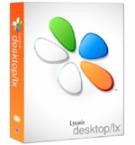 Price: £18.78
Price: £18.78
Manufacturer: Redmond Linux Corp.
Website: http://www.lycoris.com/
Required Spec: Pentium-class CPU, 1GB Hard Disk Space, 64MB RAM.
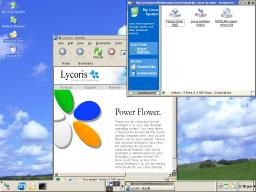 Lycoris, formerly known as Redmond Linux, is a relative newcomer to the Linux scene, being formed in 2000.
Lycoris, formerly known as Redmond Linux, is a relative newcomer to the Linux scene, being formed in 2000.
The installation was very impressive and Lycoris have clearly worked to simplify the process. The installation manual includes step-by-step instructions for each stage of the install, as does the installer itself but in reality, few people will need either of these during the installation. All hardware was detected and configured automatically and the hard disk was automatically set-up for Lycoris.
As I was breezing through the install, I noticed something which really impressed me - it was already installing the packages! This may sound like a very trivial idea, but I have never seen another distribution do this while you can continue to configure other things. Then, I was pleasantly surprised again. Once I had finished the remaining steps in the installer, I was then presented with solitaire to play until the packages had finished installing! Excellent!
I do however have the odd reason to complain about the installation process. It appears that it is not possible to configure either ADSL or a network printer during the installation, even though you can configure modems/ISDN and local printers. It is possible to configure these after the install, but I can see no reason why it cannot be done during the installation process. ADSL is supported, but the set up procedure is apparently not documented and has to be done using a command-line utility after installation. Once the installation is complete your system is booted. Everything looks very familiar... maybe because it is clearly designed to resemble Windows! Everything is very easy to find and use through the shortcuts on the desktop (including a network browser) and through all the shortcuts in the "flower menu". All the applications you are likely to need are included, with various Internet chat clients, an office package (Koffice – not OpenOffice.org which is sold separately for around £30) and of course a web browser. There is also an organiser, address book etc. which can all be synced with a PDA.
Configuring the system after installation is also incredibly easy. The control centre application is very impressive and is a central point for configuring hardware, software packages, Internet updates and the look-and-feel of the system. One thing that the installer was lacking, was a locale configuration to tell it what country you're in. This means that you end up with a US keyboard and language configuration which is very irritating. This can be easily solved after install in the control centre, but I think it should be a part of the installation.
Getting on the Internet is also easy. The modem is configured during installation and all you have to do to dial is select "connect to the Internet" in the flower menu, give it your ISP details and you're online. There is also a firewall which can be activated at the touch of a button, but it is not activated by default – the system is actually quite secure, but you can never be too careful.
At under £20 Lycoris is one of the cheaper distributions. It may be less well known than the likes of Redhat, but it has certainly shown that it can put up a good fight for the desktop.
Quality: 8 out of 10
Value: 9 out of 10
Overall: 8 out of 10
LindowsOS 3.0
 Price: £37.59
Price: £37.59
Manufacturer: Lindows.com Inc.
Website: http://www.lindows.com/
Required Spec: 500 MHz processor, 128MB RAM.
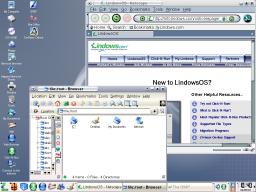 Lindows entered with world of Linux with a rather large splash – large enough to disturb Microsoft and cause a prompt legal battle over the Lindows name. Lindows challenges Microsoft at every opportunity and LindowsOS is no exception.
Lindows entered with world of Linux with a rather large splash – large enough to disturb Microsoft and cause a prompt legal battle over the Lindows name. Lindows challenges Microsoft at every opportunity and LindowsOS is no exception.
The installer is very simple and help is provided at every step both on-screen and in the included quick start guide. Unfortunately, it isn't very stable and died with a fatal error on my first installation attempt. I tried again and luckily it worked this time... The software was then installed and the system rebooted. I was then rather disappointed to not be presented with a desktop, but with a text-based login. I eventually tracked this down to being the fault of the NVidia graphics driver Lindows uses which requires specific BIOS settings in order for the graphical desktop to work – but Lindows didn't tell me that.
A lot of thought has clearly gone into the desktop layout. All the common software has shortcuts on the desktop and shortcut bar making using the system incredibly easy. The network browser on the desktop is very useful but is not configured at install time, so it doesn't know which domain or workgroup to browse! You have to hunt for this in the menu to find the configuration tool.
I then realised that very little software, apart from a web browser and e-mail client, was installed on the system – not even an office package. Dialup Internet users beware – you are expected to download all the software you require! Lindows has a system called the Click 'n' Run Warehouse which you log on to and download and install software from – some of which must be paid for. If you buy the retail version of LindowsOS, you are provided with a Click 'n' Run Express CD which contains some of the larger pieces of software (such as OpenOffice) to save you downloading them. I think it is quite ridiculous to not include essential software such as an office package or graphics manipulation software with the system. Even relatively small packages are not included and must be installed and the download time quickly adds up if you don't have broadband. The Click 'n' Run Warehouse would be an excellent way to get additional software for your system, but I think essential software must be included with the system to start with. The software system itself is actually very good and a convenient way to install additional software – apart from the odd occasion where the installer quits without warning.
Hardware support appears to be good in Lindows, although some of the configuration tools aren't very user friendly. ISDN and wireless networks are supported; ADSL is not supported by the configuration tools but can be made to work. Support for scanners, digital cameras and other hardware can be downloaded from the Click 'n' Run Warehouse.
There is extensive documentation and guides on the Lindows support site, including lists of supported hardware – including an ADSL configuration guide.
Overall, I was rather disappointed with Lindows. It COULD be an excellent system if the stability issues and lack of software were addressed.
Quality: 6 out of 10
Value: 5 out of 10
Overall: 6 out of 10
Summary
| Redhat | SuSE | Mandrake | Lycoris | Lindows | |
| CDs | 7 | 3 | 2 | 1 | 1 |
| Manuals | 2* | 1 | 1 | 1 | 1 |
| Online Update | Yes** | Yes | Yes | Yes | Yes |
| Installation | 6 | 9 | 7 | 8 | 7 |
| Ease of Use | 7 | 6 | 7 | 9 | 7 |
| Included Software | 8 | 8 | 8 | 9 | 5 |
| Quality of System | 7 | 7 | 6 | 8 | 6 |
| Value for Money | 7 | 7 | 7 | 9 | 5 |
* A CD containing additional documentation is also included.
** The "Redhat Network" is a premium service. A 30 day membership is included with Redhat 9 Personal.
Best Overall: Lycoris Desktop/LX
All of these distributions have their own positives and negatives, but for anyone looking for an simple, easy to use system Lycoris Desktop/LX is the clear winner. It is clearly developed from the ground-up to be easy to use for anyone aged 9 to 90.
It appears to me that "The Big Three" distributions (Redhat, SuSE and Mandrake) have all rather stagnated recently; instead of innovating and looking for new ideas, they're simply copying each other with the result that once you get the systems installed, they are pretty much the same. Lycoris are clearly not afraid to try new ideas and to break the mould with something as simple as giving you a game to play while the system installs.
Highly Commended: SuSE Linux 8.2 Personal
The installation procedure and extensive hardware support are truly excellent and SuSE certainly came in a close second to Lycoris. Unfortunately it was the ease of use which let it down, but it all depends of what you want from your Linux system.
 Home
Home Published Work
Published Work Contact
Contact Links
Links